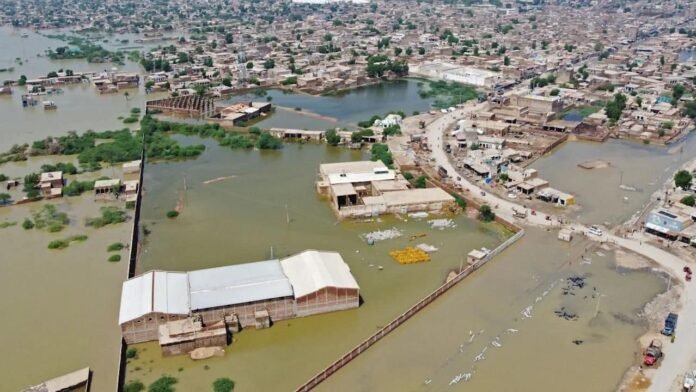At the Geneva Conference on Flood Relief in Pakistan, International Support pledged $11 billion; however, they received only $2.8 billion. Half of this sum has been spent on people affected by floods and half on balancing the budget.
Almost half of the $2.8 billion disbursed was not directly related to flood relief because it consisted mainly of loans for oil financing and budgetary support. The Ministry of Economic Affairs considers disbursements totaling USD 2.8 billion a significant achievement since it represents 20% of commitments made for projects worth over $8 billion.
Pakistan has received $2.8bn until April 2024 out of the promised $11bn from the International Conference on Climate Resilient Pakistan held in Geneva, said Minister for Economic Affairs Ahad Khan Cheema I during the 4th meeting of International Partners Support Group (IPSG). It was after the devastating floods of 2022 that they appealed to the world community, which resulted in pledges amounting to $11 billion. Still, most of these were not new commitments but rather redirected existing financing pipelines toward flood relief.
Flood Relief Funds Allocation
Since then, organizations have actually spent very little money on the ground despite making some progress post-floods; out of 2.8 billion dollars received, they only used 1.35 billion dollars for non-flood purposes. These funds are project loans, with disbursement expected over the next few years.
Different lenders showed different levels of support through their disbursements. The World Bank disbursed the highest amount, nearly USD 1.1 billion, followed by the Asian Development Bank (ADB) and the Islamic Development Bank (IDB), which fell short of respective commitments.
Pakistan’s economic woes have continued unabated, notwithstanding attempts at attracting foreign funds due to failure in achieving enough assistance from abroad so far vis-a-vis targets set by the government itself. For example, they want an additional $6 bn as part of next year’s budget outlay but this year’s numbers still aren’t looking good.
The meeting involved bilateral and multilateral development partners as well as representatives from international organizations who discussed ways in which they could collaborate towards making Pakistan resilient.


